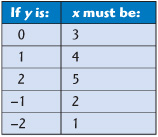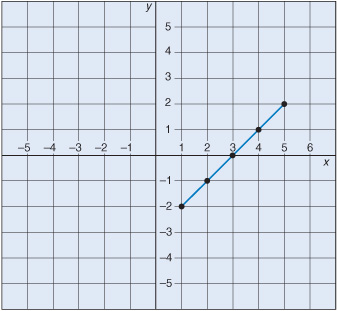Skill 38
Understand and Solve Equations
There will probably be some algebra questions on your ASVAB test, so it’s a good idea to spend some time studying basic algebra concepts and practicing solving algebra problems.
Solving Equations. An equation is a math expression in which one quantity or set of quantities is stated to be equal to another. Often one of the quantities in an equation will have an unknown value. This unknown is represented by a letter such as x. Because the quantities in an equation are equal to each other, you can use that equality to solve the equation and find the value of the unknown.
Here is a very simple equation:
2 + x = 10
The unknown number x must have a value that, when added to 2, equals 10. So x must be 8. Normally on the ASVAB and other tests, you won’t find such a simple equation.
The usual way to solve this kind of problem is to restructure the equation a bit. To do so, you can add quantities to each side or subtract quantities from each side. Or you can multiply each side by a number or divide each side by a number. But remember: Whatever you do to one side of an equation, you must do the same to the other side. Otherwise, the two sides of the equation will no longer be equal!
Your aim when manipulating an equation in this way is to end up with the unknown quantity by itself on one side of the equals sign, and the known numerical quantities on the other side. For example, using the equation above:

Let’s take a more difficult equation:

How do you know this is correct? To check your work, substitute −8 for x in the original equation: 3 (−8) + 12 = −8 + (−4) or −12 = −12. Since both sides are the same, −8 was the correct answer.
Let’s try an equation containing two fractions.
![]()
To solve this kind of equation, cross multiply.
16(x) = 20(4)
16x = 80
x = 5
Multiplying Expressions. To multiply two expressions such as (x + 4) (x + 5), you multiply each term in one expression by each term in the other. Look at this example:

Be careful to account for any minus signs. Note what happens in the problem above if we change the second expression, x + 5, to x − 5:

Dividing Expressions. Dividing expressions is a little tougher. Here is an example. Note that you take each expression in the numerator and divide it by the denominator.
![]()
Factoring Expressions. An ASVAB question might ask you to find the factors of an expression. The factors of a given expression are simpler expressions that, when multiplied together, produce that given expression. For example, when (x + 4) and (x + 5) are multiplied together, they produce the expression x2 + 9x + 20. So (x + 4) and (x + 5) are factors of that more complex expression.
Factoring expressions can be asked in different ways. For example, you may be asked, “What two expressions can be multiplied by each other to get x2 + 15x + 36?” Or you may be asked, “What are the factors of x2 + 15x + 36?”
To solve these problems, think about the numbers. The final term in the expression is 36. What two numbers when multiplied together produce 36? Some possibilities are 6 and 6, or 3 and 12, or 18 and 2. The middle term of the expression is 15x. Of the possible combinations you just identified, which two numbers when added together produce 15? The only possibilities are 3 and 12. So the factors of x2 + 15x + 36 must be (x + 3) and (x + 12).
Graphing Equations. On the ASVAB you may be asked to choose which graph was produced from a given equation with two unknowns, such as x = y + 3. Note that many different pairs of numbers could be substituted for x and y in that equation and the equation would still be true. The graph of an equation like this shows all those different number pairs by their locations on the graph’s x and y axes. A line linking those locations will be straight or curved depending on the equation.
When asked about graphing an equation, start by identifying pairs of numbers that can be substituted for the unknowns in the equation. It usually helps to make a chart like the one shown below:

Take those number pairs and plot them on a graph, remembering that the horizontal axis is the x axis and the vertical axis is the y axis. The numbers from the chart above have been plotted onto the graph below.

Test Yourself!
Solve for x:
![]() 5x + 10 = 35
5x + 10 = 35
x = _____ _____ _____ _____
![]() 7x + 3 = 52
7x + 3 = 52
x = _____ _____ _____ _____
![]()
x = _____ _____ _____ _____
Solve for y:
![]()
y = _____ _____ _____ _____
![]() 12y − 3y = 24 + 3y
12y − 3y = 24 + 3y
y = _____ _____ _____ _____
![]()
k = _____ _____ _____ _____
![]() Multiply: (x + 3)(x + 7)
Multiply: (x + 3)(x + 7)
= _____ _____ _____ _____
![]() Multiply: (j + 6)(j − 2)
Multiply: (j + 6)(j − 2)
= _____ _____ _____ _____
![]() Find the factors of c2 + 8c − 20
Find the factors of c2 + 8c − 20
_____ _____ _____ _____
![]() Find the factors of g2 − 6g − 16
Find the factors of g2 − 6g − 16
_____ _____ _____ _____
